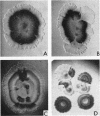Abstract
Conditions are described that led to the isolation of NRRL B-2309M, a strain of Bacillus popilliae which sporulates regularly in laboratory culture. Colonies grown on a medium formulated with yeast extract and the ingredients of Mueller-Hinton with phosphate, trehalose, and agar, produced 20% spores in 10 to 12 days. The quantity and kind of yeast extract determine the extent of sporulation, although there are other requirements for optimal growth and sporulation. Spore inocula free of viable vegetative cells are necessary to maintain sporogenicity since asporogenic substrains arise spontaneously on solid and in liquid media. One such substrain, NRRL B-2309N, is also asporogenic in larvae, but lethal, owing to vigorous vegetative growth. Strain B-2309M is infective when vegetative cells or spores are injected into Japanese beetle larvae but fewer spores are formed in vivo than when infections are caused by NRRL B-2309. The characteristics of four related strains of B. popilliae are tabulated.
Full text
PDF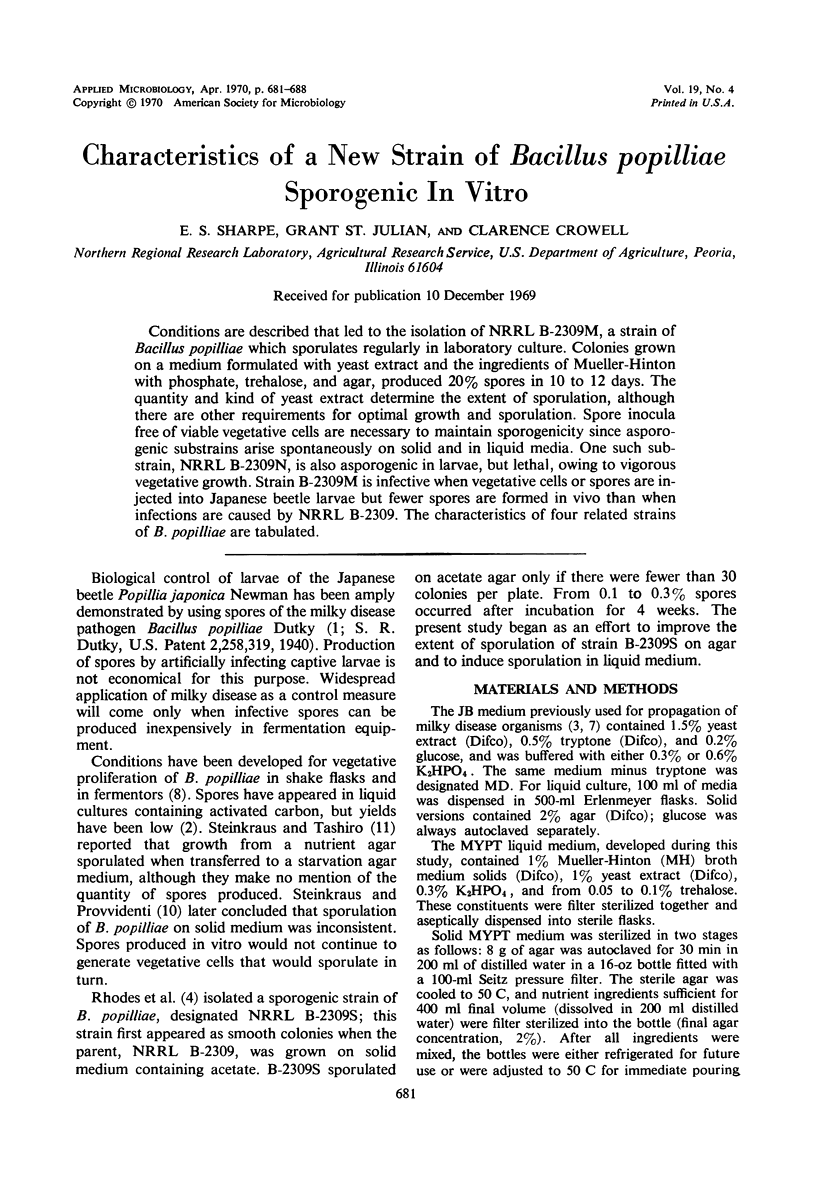
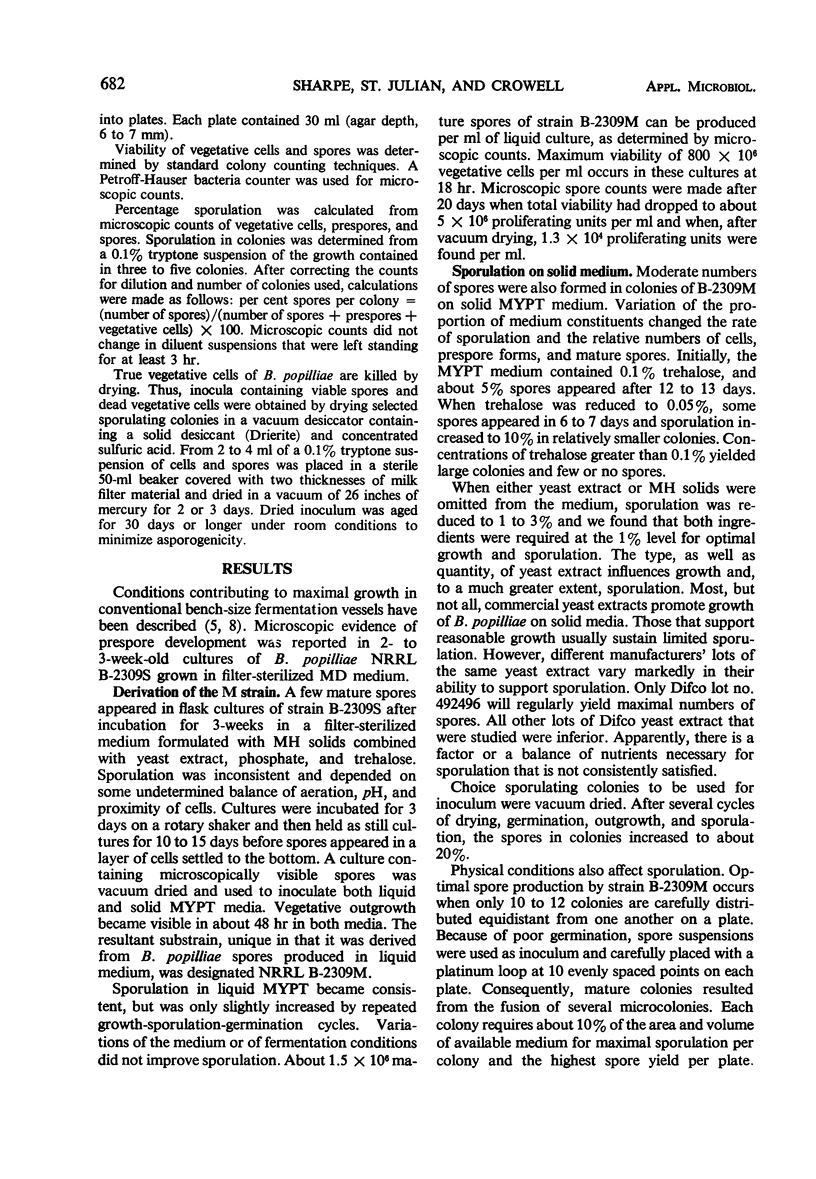
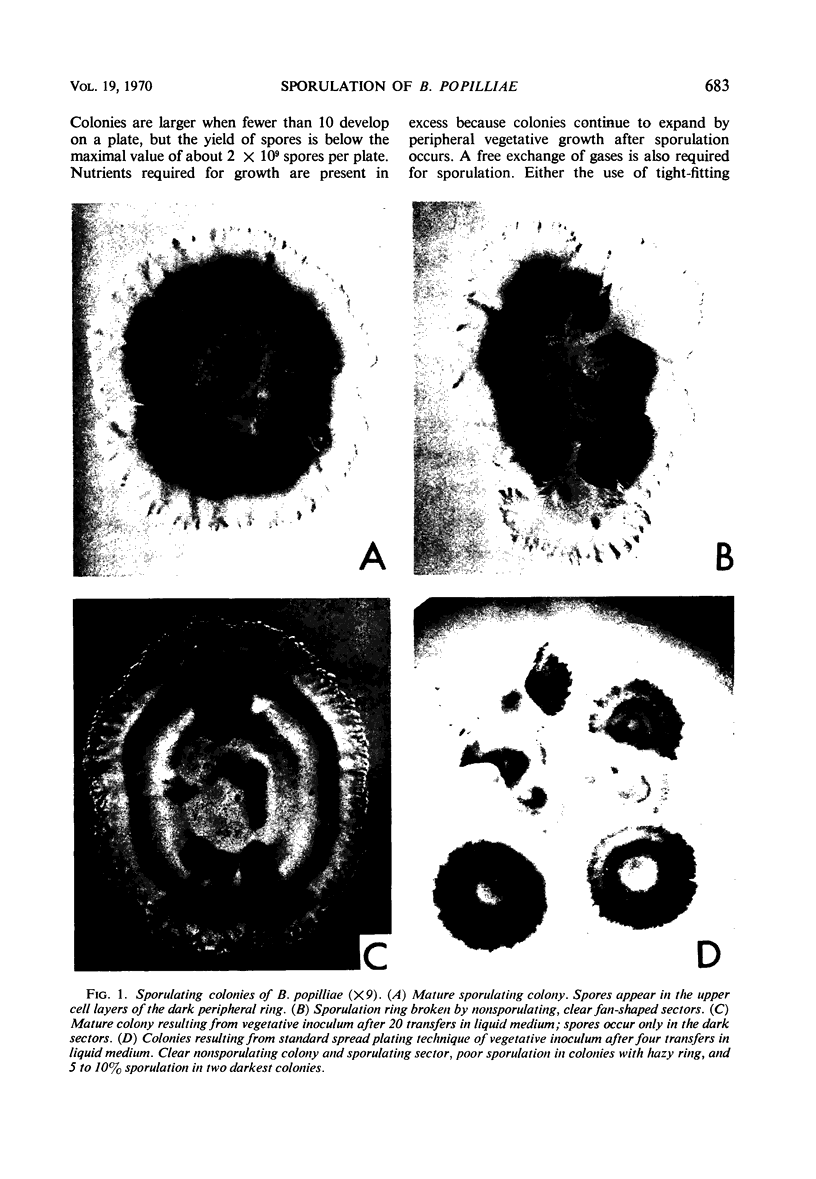
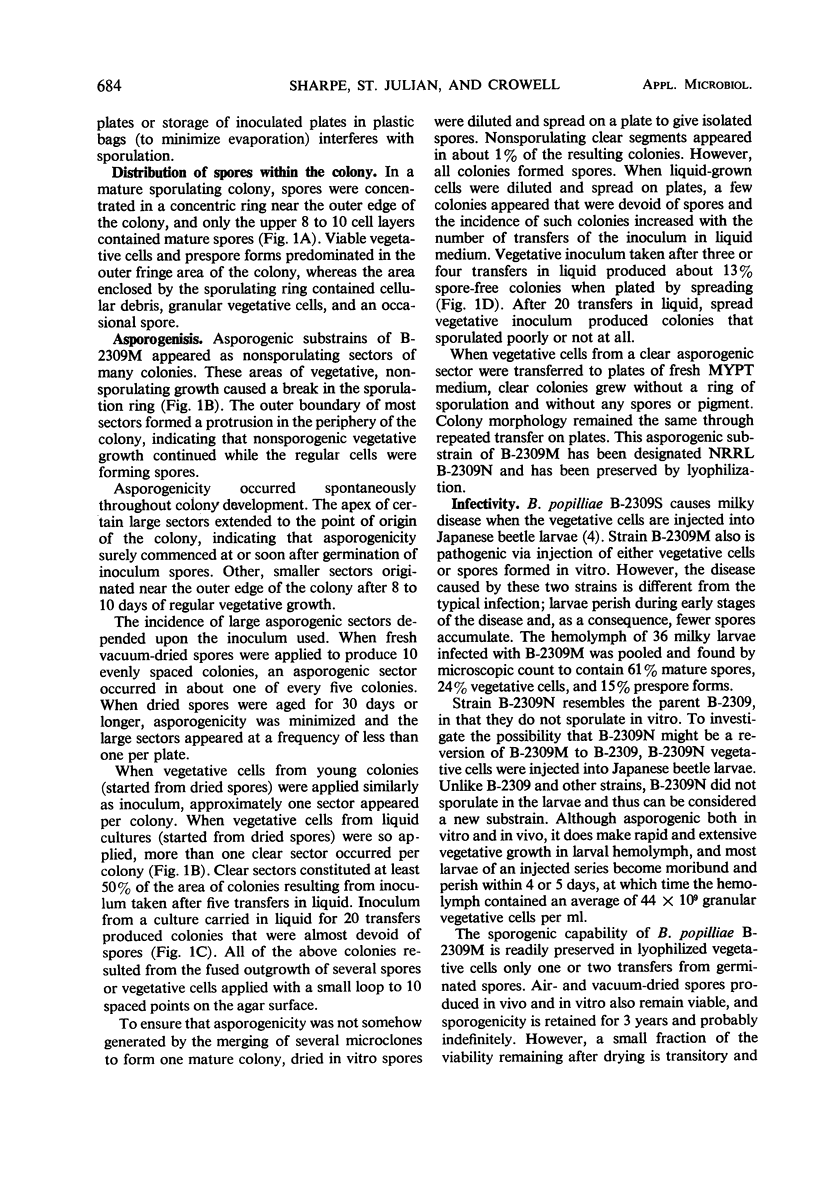
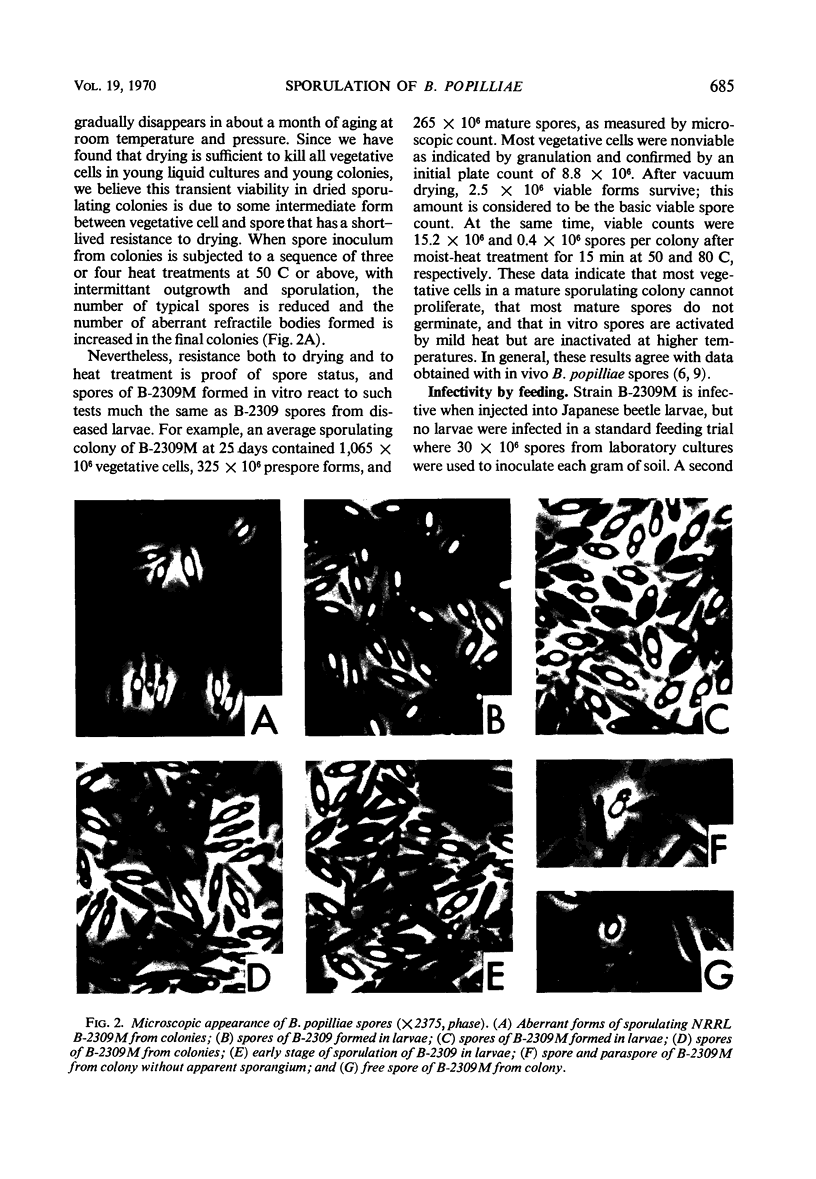
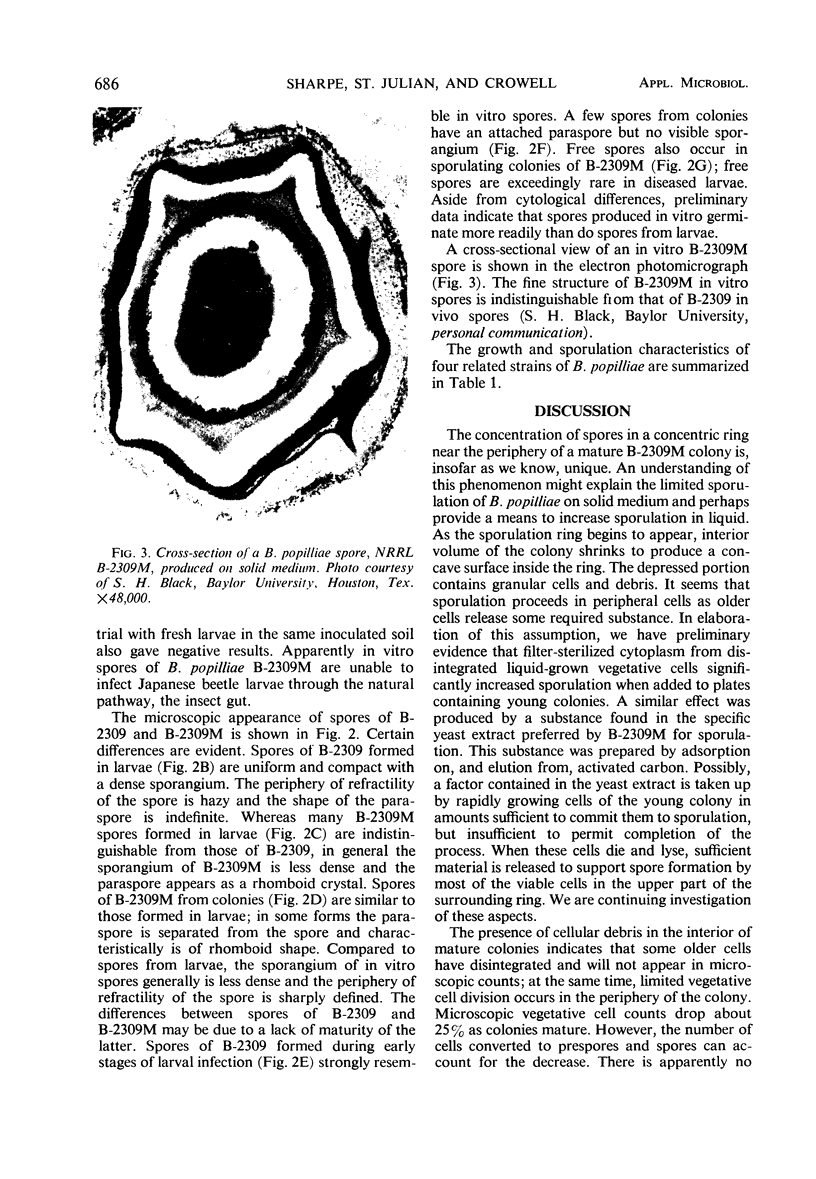
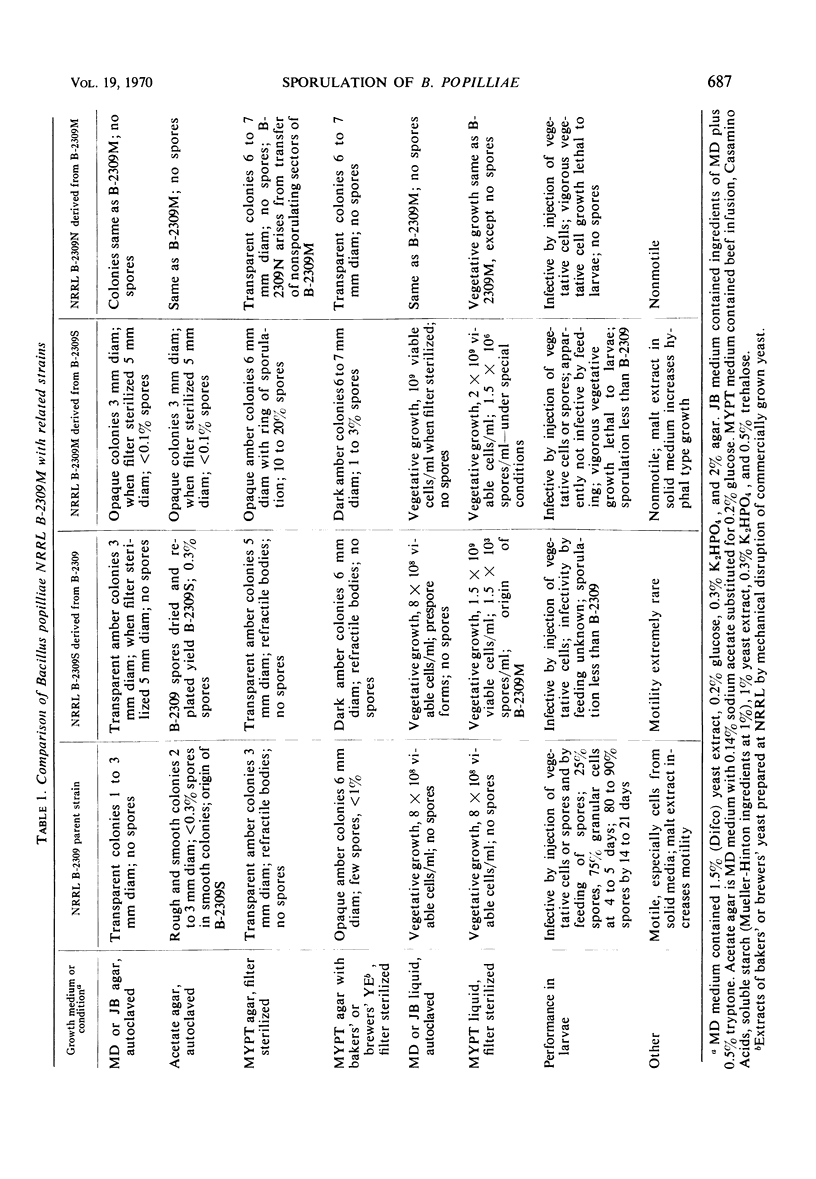
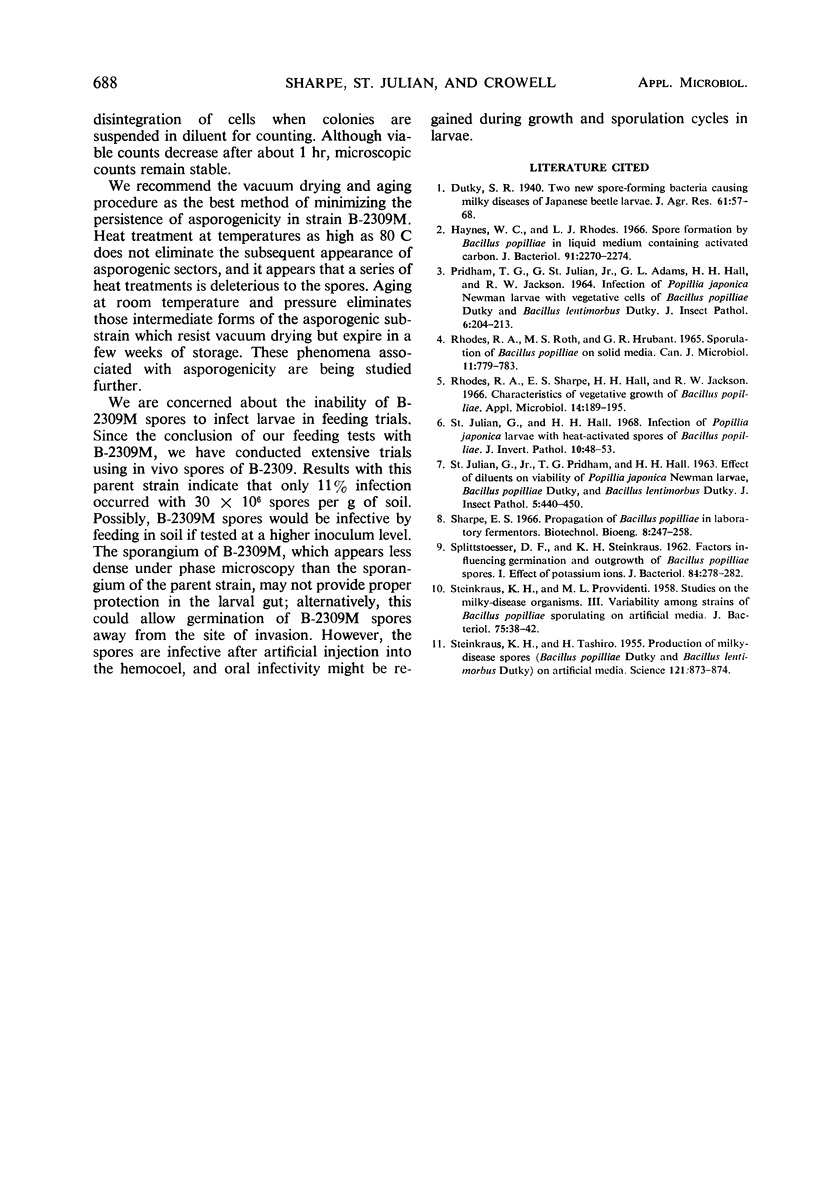
Images in this article
Selected References
These references are in PubMed. This may not be the complete list of references from this article.
- Haynes W. C., Rhodes L. J. Spore formation by Bacillus popilliae in liquid medium containing activated carbon. J Bacteriol. 1966 Jun;91(6):2270–2274. doi: 10.1128/jb.91.6.2270-2274.1966. [DOI] [PMC free article] [PubMed] [Google Scholar]
- Rhodes R. A., Roth M. S., Hrubant G. R. Sporulation of bacillus popilliae on solid media. Can J Microbiol. 1965 Oct;11(5):779–783. doi: 10.1139/m65-105. [DOI] [PubMed] [Google Scholar]
- Rhodes R. A., Sharpe E. S., Hall H. H., Jackson R. W. Characteristics of the vegetative growth of Bacillus popilliae. Appl Microbiol. 1966 Mar;14(2):189–195. doi: 10.1128/am.14.2.189-195.1966. [DOI] [PMC free article] [PubMed] [Google Scholar]
- SPLITTSTOESSER D. F., STEINKRAUS K. H. Factors influencing germination and outgrowth of Bacillus popilliae spores. I. Effect of potassium ions. J Bacteriol. 1962 Aug;84:278–282. doi: 10.1128/jb.84.2.278-282.1962. [DOI] [PMC free article] [PubMed] [Google Scholar]
- STEINKRAUS K. H., PROVVIDENTI M. L. Studies on the milky disease organisms. III. Variability among strains of Bacillus popilliaze sporulating on artificial media. J Bacteriol. 1958 Jan;75(1):38–42. doi: 10.1128/jb.75.1.38-42.1958. [DOI] [PMC free article] [PubMed] [Google Scholar]
- STEINKRAUS K. H., TASHIRO H. Production of milky-disease spores (Bacillus popilliae Dutky and Bacillus lentimorbus Dutky) on artificial media. Science. 1955 Jun 17;121(3155):873–874. doi: 10.1126/science.121.3155.873. [DOI] [PubMed] [Google Scholar]
- St Julian G., Hall H. H. Infection of Popillia japonica larvae with heat-activated spores of Bacillus popilliae. J Invertebr Pathol. 1968 Feb;10(1):48–53. doi: 10.1016/0022-2011(68)90262-0. [DOI] [PubMed] [Google Scholar]



